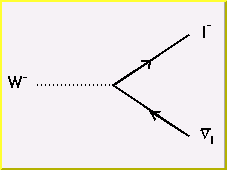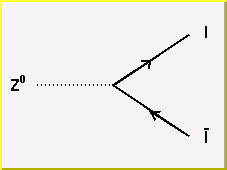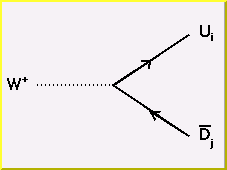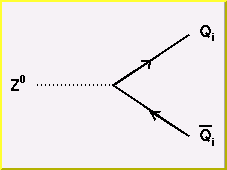

The Weak Force: the basic interaction vertices




The W vertex receives an term corresponding to the quark flavors at the vertex. These terms are conveniently arranged in a 3x3 matrix called the Cabibbo-Kobayashi-Maskawa (CKM) matrix:
| VCKM = | Vud | Vus | Vub |
| Vcd | Vcs | Vcb | |
| Vtd | Vts | Vtb |
A Z boson couples only to quarks of the same weak eigenstate. Due to the unitarity property of the CKM matrix, this results in couplings between quarks of the same mass eigenstate.
The strong, electromagnetic, and neutral weak particles couple between quarks of the same flavor (type). The only way to change quark flavor is through charged weak processes. This leads to the idea of flavor quantum numbers to describe the quark content of hadrons. (This also is due to the mass differences between the strange, charm, and bottom quarks. The smallness of the up and down quark masses relative to the hadron masses allows quantum mechanical mixing between states such as u anti-u and d anti-d. For this reason, we don't use quantum numbers for up and down, but use something called isospin to be introduced later.) The first quantum number is S for strangeness. It was intorduced to help explain the fact that strange particles are readily produced in pairs in high energy collisions, but live relatively long times. That is, they are produced via strangeness-conserving strong or electromagnetic interactions, but decay individually in strangeness-changing weak decay. Basically a hadron containing a strange quark has strangeness -1, and a particle with an anit-strange quark has strangeness +1. (To help remember this, note that the flavor quantum numbers have the same sign as the charge of the corresponding quark.) Likewise a hadron containing a charm quark has charmness +1, and a hadron containing a bottom quark has bottomness -1 (top quarks decay to rapidly to form hadrons).
Hadrons are now described by the following quantum numbers:
Note that not all combinations of quantum numbers correspond to real hadrons.